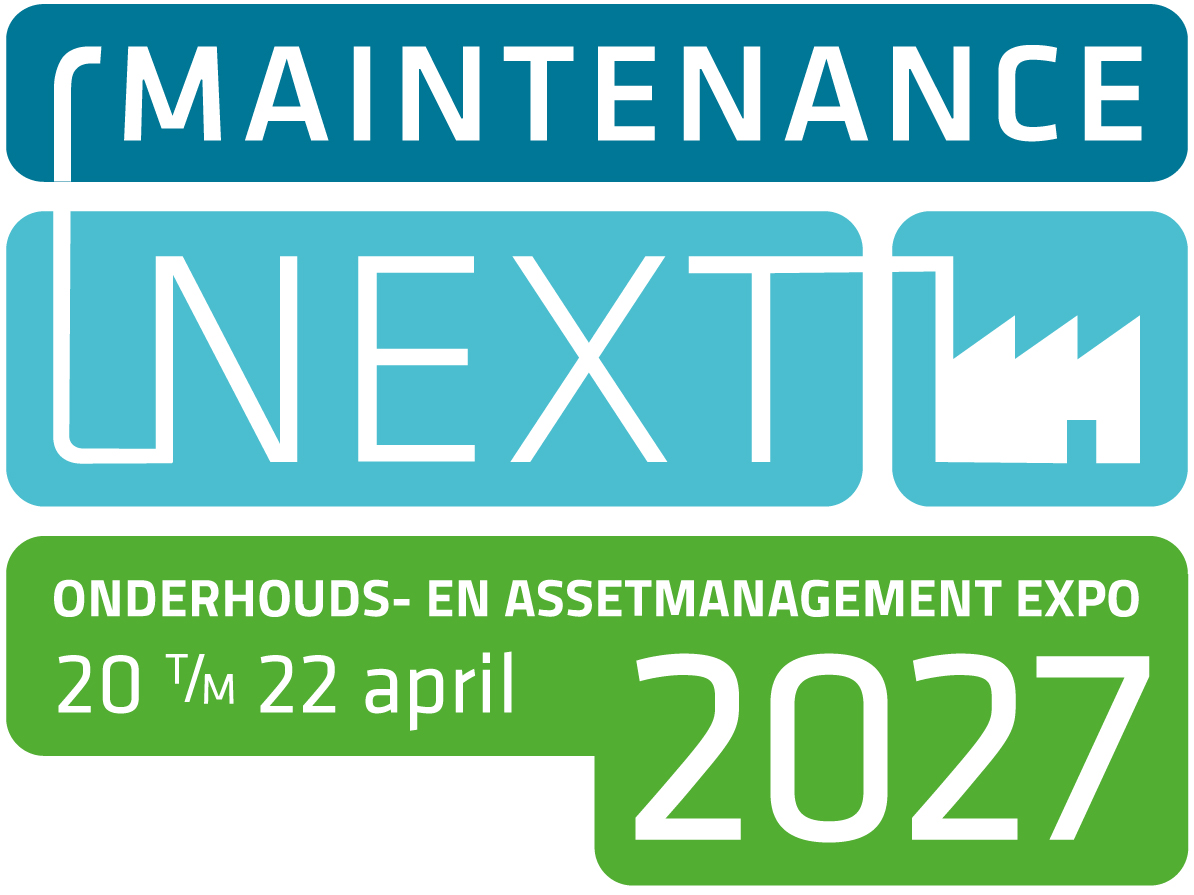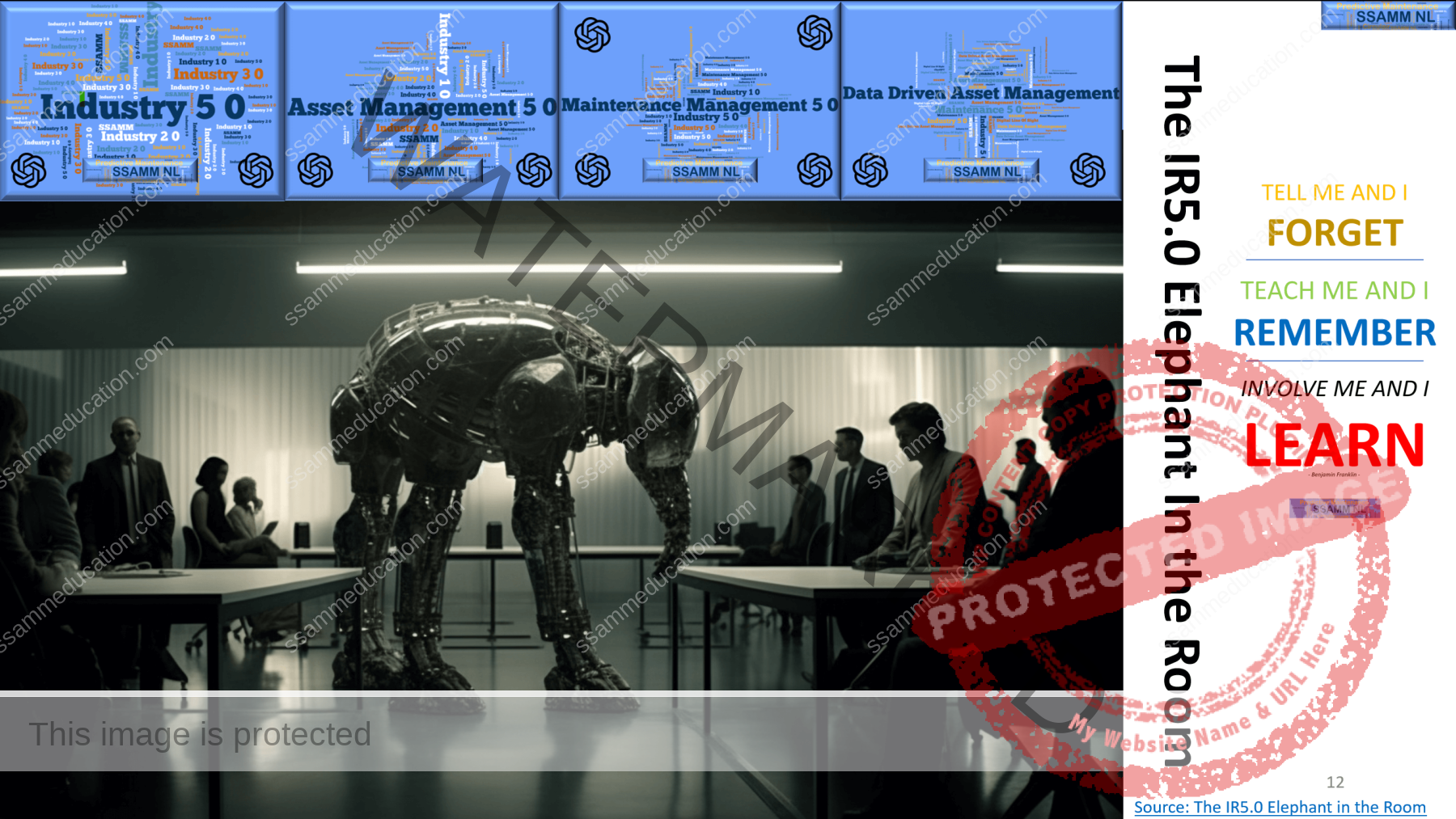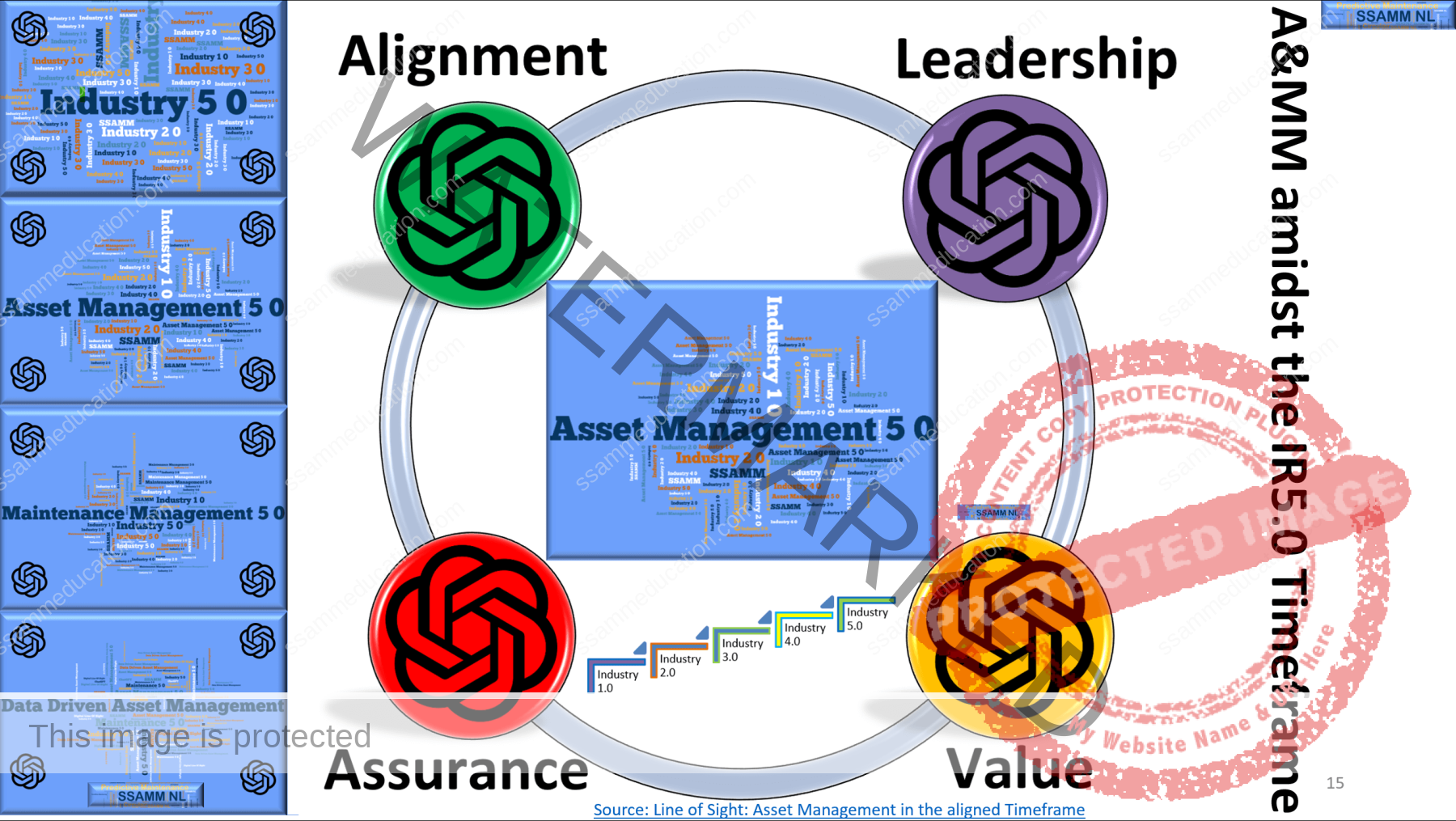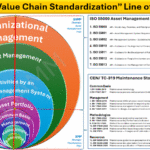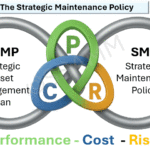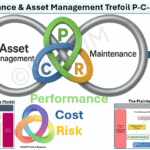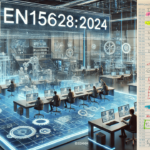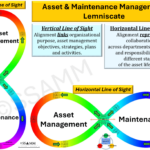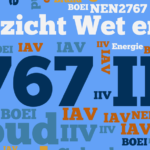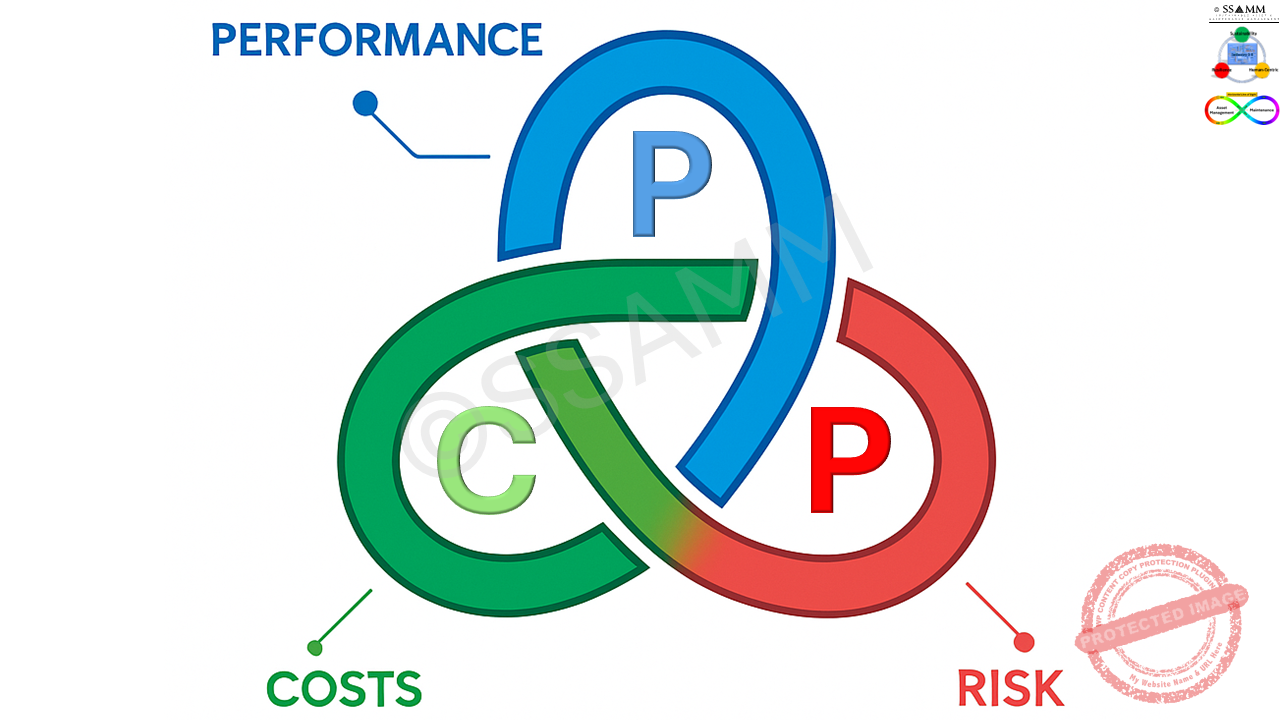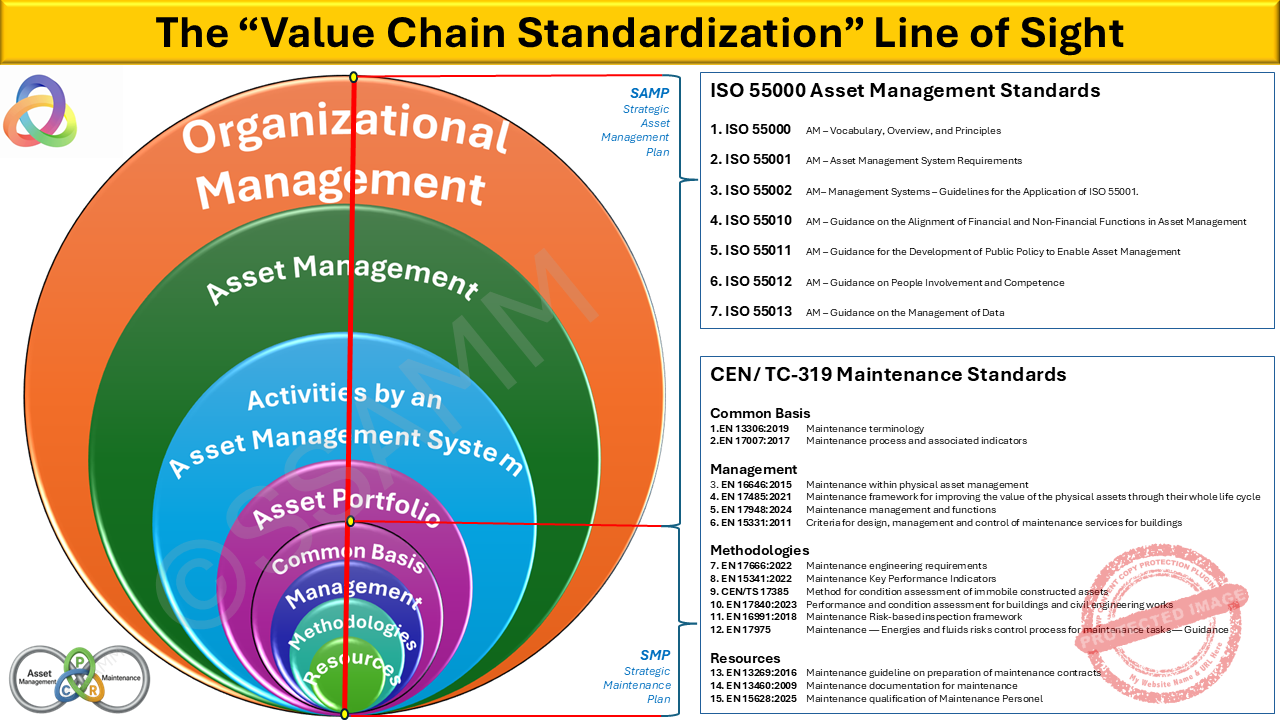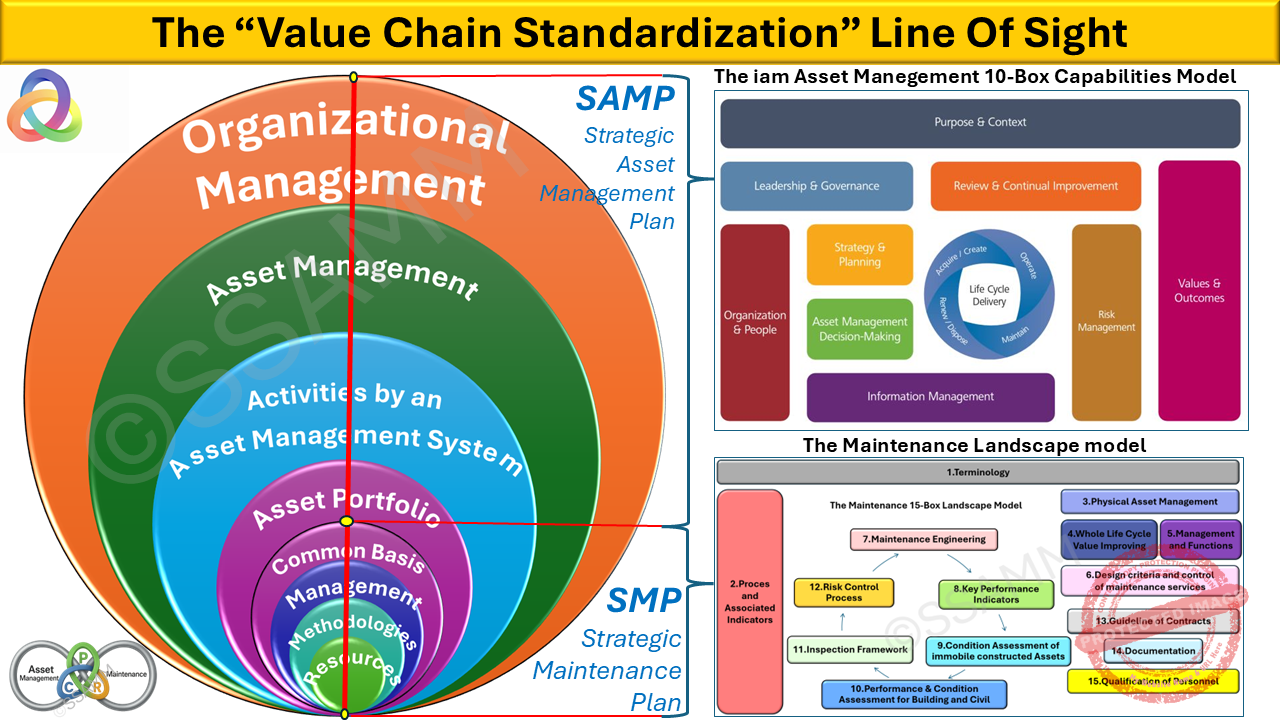The ISO 55000:2024 series and the CEN/TC 319 maintenance standards offer a mature normative basis for Asset and Maintenance Management. In practice, however, organisations often apply these standards in fragments: ISO 55001 and policies at the top, local practices and partial use of EN standards at the bottom. What is frequently missing is a visible line of sight that connects organisational objectives, Asset Management decisions and maintenance reality. This article addresses that gap by introducing Value Chain Standardization and presenting the Value Chain Standardization Line of Sight as an integrating model.
Value Chain Standardization is defined as the deliberate standardisation of language, processes, roles, methods, data and competence across the entire Asset & Maintenance Management value chain. The article treats ISO 55000:2024 and CEN/TC 319 not as separate “families”, but as components of one coherent architecture. ISO 55000, ISO 55001 and ISO 55002 provide principles, requirements and application guidance for the Asset Management System; ISO 55010 and ISO 55011 align Asset Management with finance and public policy; ISO 55012 and ISO 55013 bring people and data explicitly into scope. On the maintenance side, EN 13306 and EN 17007 define a common language and process model; EN 16646, EN 17485, EN 17948 and EN 15331 structure maintenance management across the life cycle; EN 17666, EN 15341, EN 16991, EN 17840, CEN/TS 17385 and EN 17975 provide engineering, KPI and risk-based methodologies; and EN 13269, EN 13460 and EN 15628 define the resource layer of contracts, documentation and qualification.
Building on five existing SSAMM publications, the article positions this normative set within a broader A&MM perspective. The P–C–R Trefoil Balance provides a recurring decision logic for performance, cost and risk along the value chain. The Strategic Maintenance Policy (SMP) acts as the main governance hinge between SAMP and maintenance strategy. The A&MM Lemniscate Cornerstones describe the dynamic loop between Asset Management and Maintenance, into which the line of sight is embedded as a structural spine.
A key contribution of the article is the distinction between vertical and horizontal line of sight. Vertical line of sight refers to the traceability of decisions and information from organisational objectives and public value, through the AMS and SMP, down to maintenance tasks and back via data and assurance. Horizontal line of sight refers to the consistency of standards and processes across functions at each layer: between finance, operations and Asset Management at strategic level; between planning, engineering and maintenance at tactical level; and between internal teams and contractors at operational level. The model makes these relationships explicit across all layers.
The article concludes by exploring role-based perspectives and implementation implications. For Asset Managers, Maintenance Managers, Maintenance Engineers, Reliability Engineers and design/maintainability roles, the Value Chain Standardization Line of Sight offers a shared structure to align decisions, methods and responsibilities. For organisations pursuing Industry 5.0, digitalisation and stronger assurance, it provides a practical architecture to move from fragmented standard use towards a standardised, traceable and learnable Asset & Maintenance Management value chain.
- Concept draft VCS
- Fisrst draft 19 December 2024
- Updated 17 February 2025
- Published 2 October 2025
- Published SSAMM Social Media platforms November 2025
Maintenance Fundamentals SAM, First Edition Keynote Āpōpō Congres 2026 Follow Sustainable Asset Management for latest updates
Countdown SSAMM Academy Module 1
Explore the SSAMM Academy Asset Management and Maintenance Management courses.
Click Here for the Smart information page
Author: Ing. Jan Stoker MSc. MEng. AMCP. CFAM. Follow Jan Stoker
1. Introduction
Asset and Maintenance Management are increasingly framed by international and European standards. Many organisations recognise the importance of ISO 55000:2024 and the CEN/TC 319 maintenance standards, and have started to adopt elements of these frameworks. At the same time, practice shows that these standards are often applied in isolation, at different levels of the organisation and with limited connection between them.
This chapter introduces the problem that arises from such fragmented use of standards and explains why Value Chain Standardization and a clear Line of Sight are needed. It positions the article within the broader SSAMM body of work and clarifies the definitions, scope and audience for the concepts that follow.
1.1 Why Value Chain Standardization matters
Over the last decade, Asset Management and Maintenance have gained a stronger formal footing. The ISO 55000:2024 series provides clear principles and requirements for Asset Management Systems. The CEN/TC 319 standards define terminology, processes, functions and methodologies for maintenance. Many organisations have adopted at least parts of these frameworks.
Yet in practice, the application of these standards is often fragmented. ISO 55001 and an Asset Management Policy may exist at board or director level. Strategic Asset Management Plans (SAMPs), risk registers and investment programmes may be formally documented. At the same time, maintenance is frequently organised around local practices, legacy contracts, in-house templates and partially adopted standards such as EN 13306 or EN 17007.
The result is a gap. There is no explicit, shared line of sight that connects organisational objectives, public value, Asset Management decisions and maintenance reality. Different functions use different languages, models and data structures. Performance, cost and risk are optimised locally, but not consistently across the chain. This weakens assurance, makes learning difficult and limits the value that can be created from data, digitalisation and collaboration.
This article proposes Value Chain Standardization as a response to that challenge. Value Chain Standardization is the deliberate alignment and standardisation of language, processes, roles, methods, data and competence across the entire Asset & Maintenance Management value chain. It aims to turn a patchwork of standards and practices into one coherent, navigable architecture that supports both governance and day-to-day work.
The Value Chain Standardization Line of Sight is introduced as the central visual and conceptual device. It represents the value chain as a set of layers, from organisational management and public value at the top, through the Asset Management System and the Strategic Maintenance Policy, down to maintenance processes, methodologies and resources. Along this line of sight, decisions and information can be traced vertically from strategy to execution and back. This article explains and justifies that model.
1.2 From local optimisation to an integrated Line of Sight
Many improvement initiatives start within one function. Asset Management teams strengthen their SAMP and governance. Maintenance teams implement new methodologies such as risk-based inspection, condition-based maintenance or new KPI structures. Finance refines life-cycle costing models. Operations focuses on safety and resilience.
These initiatives add value, but they often remain locally optimised islands. The Asset Management team may not fully exploit the capabilities of maintenance methodologies. Maintenance may not be explicitly linked to SAMP objectives. Finance may not use the same risk concepts as maintenance engineers. Data models may not reflect the structures needed for ISO 55013 or for combining asset, condition and cost information.
The notion of Line of Sight addresses this issue. In the context of Asset and Maintenance Management, line of sight refers to the ability to:
-
trace a decision, requirement or constraint from organisational objectives to specific activities and assets; and
-
trace data, evidence and learning from operational events back to policies, risk assumptions and strategies.
Without such a line of sight, organisations cannot convincingly explain why specific maintenance decisions are made, how they relate to performance, cost and risk, or how they support public value and long-term affordability. Assurance becomes reactive and document-driven instead of evidence-based and systemic.
The Value Chain Standardization Line of Sight is proposed as a way to design and communicate this traceability. It is not an additional standard, but a structuring perspective on existing standards. It shows how the ISO 55000:2024 series and the CEN/TC 319 standards can be arranged along one value chain. It makes explicit how Asset Management and Maintenance are connected, and where key governance elements such as the Strategic Maintenance Policy and the P–C–R decision logic need to sit.
1.3 Relationship to other SSAMM articles
This article does not stand alone. It is part of a developing body of work on Asset & Maintenance Management within SSAMM. In particular, it builds on and integrates five existing publications:
-
The P–C–R Trefoil Balance introduces the idea that performance (P), cost (C) and risk (R) should not be optimised in isolation, but treated as an intertwined system. The trefoil is used as a recurring decision compass: it represents the integrated logic that should be applied at portfolio, programme, policy, planning and operational levels. In this article, the P–C–R trefoil is positioned along the Value Chain Standardization Line of Sight as the common decision logic at multiple layers.
-
The Strategic Maintenance Policy (SMP) defines the SMP as the key governance instrument that translates Asset Management objectives from the SAMP into maintenance strategies, principles and priorities. The SMP sits at the intersection between ISO 55000 requirements and CEN/TC 319 maintenance practice. In the Value Chain Standardization Line of Sight, the SMP is a central node that anchors maintenance within the Asset Management System.
-
The A&MM Lemniscate Cornerstones describe Asset Management and Maintenance as two interdependent halves of a continuous loop. The lemniscate emphasises that value is created through an ongoing dynamic between strategy, planning, execution and feedback. The Value Chain Standardization Line of Sight can be seen as the structural spine running through this lemniscate: it shows what needs to be connected, while the lemniscate shows how information and decisions flow over time.
-
The Maintenance Framework organises the CEN/TC 319 standards into a coherent architecture of maintenance processes, functions, methodologies and resources. It interprets standards such as EN 13306, EN 17007, EN 17485, EN 17666 and EN 15628 as building blocks of a normative maintenance system. This framework forms the lower part of the Value Chain Standardization Line of Sight.
-
ISO550XX:2024 Insights & Overview provides an interpretation of the updated ISO 55000:2024 series. It clarifies the principles, the structure of requirements and the implications for governance, risk, assurance and value. These insights form the upper part of the Value Chain Standardization Line of Sight, where organisational management and the AMS are located.
The present article can therefore be viewed as a hub that connects these earlier contributions. It uses the Value Chain Standardization Line of Sight to integrate the P–C–R trefoil, the SMP, the A&MM Lemniscate, the Maintenance Framework and the ISO 55000:2024 architecture into one value chain perspective. Subsequent articles and case studies can then refer back to this hub as a reference model.
1.4 Definitions, scope and assumptions
To avoid ambiguity, several key terms are defined as they are used in this article. The focus is not on reproducing full standard definitions, but on clarifying working meanings in the context of Value Chain Standardization.
-
Value chain refers to the end-to-end sequence of activities through which an organisation plans, creates, operates, maintains and retires assets in order to deliver value. In this article, the value chain is viewed from an Asset & Maintenance Management perspective, including strategy, planning, design, delivery, operation, maintenance, improvement and feedback.
-
Standardization refers to the deliberate, agreed and documented alignment of language, processes, roles, methods, data structures and competence requirements. It does not mean rigid uniformity, but rather a stable framework within which justified variation can be applied.
-
Value Chain Standardization (sometimes also referred to as “waardeketenstandaardisatie”) is the application of standardization principles to the entire Asset & Maintenance Management value chain. It includes the integrated use of ISO 55000:2024 and CEN/TC 319 standards, as well as internal policies and procedures that align with these norms.
-
Line of Sight denotes the explicit ability to trace how organisational objectives, policies and risk criteria are translated into plans, programmes, processes and tasks, and how data and experience from execution flow back into decision-making and assurance.
-
Asset Management System (AMS) is used in the sense of ISO 55001: the management system that coordinates Asset Management activities and controls risk, performance and value.
The scope of this article is primarily physical assets in infrastructure-intensive and industrial contexts, where maintenance plays a critical role in risk control, performance and cost. The article assumes a multi-actor environment in which asset owners, asset managers, service providers, contractors and regulators interact. The standards discussed are international and European; however, the arguments are also relevant for organisations operating with national or sectoral standards, provided that they adopt similar principles.
Several assumptions are made explicit:
-
The reader is familiar with the basic structure of the ISO 55000 series and aware of the existence of CEN/TC 319 standards, though not necessarily with their detailed contents.
-
The organisation operates assets whose failure can have significant safety, environmental, financial or reputational consequences.
-
There is at least an intention to move towards a more systematic, standard-based approach to Asset and Maintenance Management.
These assumptions allow the article to focus on integration and architecture, rather than on introductory explanations of individual standards.
1.5 Audience and reading guide
The article is written for several overlapping audiences within the Asset & Maintenance Management community. These include:
-
Asset Managers, who are responsible for translating organisational objectives into asset strategies, portfolios and programmes, and who must justify decisions on performance, cost and risk.
-
Maintenance Managers, who must organise and steer maintenance in a way that is aligned with Asset Management objectives, budgets and risk appetite, while managing backlogs, resources and service providers.
-
Maintenance Engineers and Reliability Engineers, who design and optimise maintenance concepts, inspection regimes, condition assessments, KPIs and risk models, and who need to ensure that their methods fit within a wider normative framework.
-
Designers and maintainability specialists, who influence future maintenance effort and risk through design choices and early life-cycle decisions.
-
Policy makers, regulators and auditors, who require a structured lens to assess whether standards are used coherently and whether line of sight is present.
-
Educators and trainers, who aim to design curricula and learning paths that reflect the integrated nature of Asset & Maintenance Management.
The structure of the article supports different reading strategies. Chapter 2 introduces the conceptual foundations of value, the A&MM lemniscate and the value chain. Chapter 3 explains the Value Chain Standardization Line of Sight model itself. Chapter 4 provides a normative mapping between ISO 55000:2024 and CEN/TC 319, and can be read as a reference section. Chapter 5 shows how the model integrates with the P–C–R trefoil, the SMP, the A&MM Lemniscate and the Maintenance Framework. Chapter 6 offers role-based perspectives and examples, while Chapter 7 discusses implementation and maturity. Chapter 8 concludes with implications and outlook.
Readers primarily interested in governance and strategy may focus on Chapters 1, 2, 3, 5 and 8. Those with a technical or engineering focus may find Chapters 3, 4, 5 and 6 most relevant. Practitioners working on implementation, training or change may wish to combine Chapters 3, 5, 6 and 7.
In all cases, the central idea remains the same: Value Chain Standardization, supported by a clear Line of Sight, is a prerequisite for turning standards into a living architecture that connects strategy, decisions and maintenance reality.
2. Foundations: value, line of sight and the two landscapes
The Value Chain Standardization Line of Sight is not a free-standing model. It rests on several conceptual foundations that have been developed in earlier SSAMM work and in the ISO and CEN/TC 319 standards. This chapter outlines those foundations: the notion of value in ISO 55000, the A&MM Lemniscate as system view, the Asset Management and Maintenance landscapes, the P–C–R Trefoil as integrated decision logic, and the distinction between horizontal and vertical line of sight across all layers of the value chain.
2.1 Value in the ISO 55000 sense
In ISO 55000, value is the central organising concept.
Assets are not valuable in themselves; they are valuable because they enable an organisation to achieve its objectives. The 2024 edition of ISO 55000 reinforces this perspective by sharpening the principles around value, alignment and leadership, and by stressing the link between asset-related decisions and broader organisational and societal outcomes.
This has two important implications for the present article.
- First, value is multi-dimensional. It is not limited to financial return, but includes safety, environmental performance, service levels, reliability, reputation and other forms of stakeholder value.
- Second, value is realised through a chain of activities over the asset life cycle.
Concept development, design, construction, operation, maintenance, renewal and disposal are not isolated stages; they are interdependent steps in a value chain that spans multiple functions and organisations.
The notion of Value Chain Standardization follows directly from this. If value is a chain outcome, then the standards that govern Asset Management and Maintenance must also be viewed as elements of a chain architecture, not as isolated documents. The Value Chain Standardization Line of Sight therefore takes the ISO 55000 perspective on value as its starting point and asks: how do we design a standardised value chain that consistently delivers the intended value across time, assets and stakeholders?
2.2 The A&MM Lemniscate and the system view
The A&MM Lemniscate Cornerstones describe Asset Management and Maintenance as two halves of a continuous loop. On one side, Asset Management translates organisational objectives into SAMPs, policies, portfolios and programmes. On the other side, Maintenance translates those strategies into inspection regimes, interventions, resource plans and execution, and feeds information back into Asset Management.
The lemniscate emphasises that Asset Management and Maintenance are not separate disciplines, but two perspectives on the same system.
Asset Management without maintenance is abstract; maintenance without Asset Management becomes reactive and unaligned. Value emerges from the continuous interaction between the two halves: from strategy and planning through execution and feedback, and back again.
Within this dynamic loop, the Value Chain Standardization Line of Sight can be seen as the structural spine.
The lemniscate shows the flow of decisions and information over time.
The line of sight shows the architecture that these flows must follow if they are to remain coherent, traceable and norm-conformant. In other words, the lemniscate describes how value flows; the Value Chain Standardization Line of Sight describes what needs to be connected, at which levels and with which standards.
Connecting the landscapes
2.3 The Asset Management landscape
The Asset Management landscape, as also reflected in ISO 55000 and bodies of knowledge such as the IAM Anatomy, distinguishes several layers of activity. At the top is organisational management, where mission, policy, strategic objectives and risk appetite are defined. Below that is Asset Management, where these objectives are translated into SAMPs, asset strategies, portfolios and programmes. Further down are the Asset Management System activities, where processes, controls and information flows are designed and operated. Finally, there is the asset portfolio, where individual assets and systems are planned, created, operated, maintained and retired.
This layered view is essential for understanding the Value Chain Standardization Line of Sight.
Each layer has its own dominant language, stakeholders and decision cycles.
- At organisational level, the conversation is about public value, financial sustainability and risk appetite.
- At Asset Management level, the focus is on portfolios, scenarios and programmes.
- At system-activity level, the focus becomes processes, controls and assurance.
- At the asset level, the focus is on technical condition, interventions and performance in operation.
The ISO 55000:2024 series provides the normative scaffolding for this landscape.
- ISO 55000 sets the vocabulary and principles, ISO 55001 specifies the requirements for the Asset Management System, and ISO 55002 provides guidance on how to apply these requirements across the layers.
- ISO 55010 adds alignment with financial functions; ISO 55011 positions Asset Management within public policy;
- ISO 55012 and ISO 55013 bring people and data explicitly into the picture.
The Value Chain Standardization Line of Sight uses this landscape as its upper half. It asks: how do these ISO standards, and the structures they suggest, connect downward into the maintenance landscape and the concrete activities by which assets are maintained and improved?
2.4 The Maintenance landscape and the Maintenance Framework
On the maintenance side, the CEN/TC 319 standards describe a complementary landscape.
- EN 13306 and EN 17007 provide a common basis: a shared terminology and a structured view of maintenance processes and associated indicators.
- EN 16646, EN 17485, EN 17948 and EN 15331 describe management aspects: maintenance within physical Asset Management, frameworks for value creation over the life cycle, maintenance management functions and criteria for maintenance services.
- EN 17666, EN 15341, EN 16991, EN 17840, CEN/TS 17385 and EN 17975 provide methodologies: maintenance engineering requirements, KPI structures, risk-based inspection and performance and condition assessment.
- EN 13269, EN 13460 and EN 15628 define resources: contracts, documentation and qualification of personnel.
The Maintenance Framework article organises these standards into a coherent architecture.
It interprets the CEN/TC 319 documents not as a mere list, but as an interconnected set of building blocks that define how maintenance is to be planned, executed, measured and improved. Process architecture, roles, indicators, methods and resources are positioned in relation to each other.
In the Value Chain Standardization Line of Sight, this maintenance landscape forms the lower half.
It represents the part of the value chain where strategies become concrete processes, where standards must be implemented in procedures and tools, and where people and contractors carry out work on real assets.
The key question then becomes: how do we ensure that this maintenance landscape is not a separate world, but structurally aligned with the Asset Management landscape described above?
Connecting the landscapes
2.5 The P–C–R Trefoil as integrated decision logic
The P–C–R Trefoil Balance provides a unifying decision concept that spans both landscapes.
It recognises that performance (P), cost (C) and risk (R) cannot be optimised independently. Actions that improve performance may increase cost or risk; cost reductions may erode performance or increase risk; risk reductions may require higher cost or modified performance expectations. The trefoil metaphor expresses that these dimensions are entangled, not independent.
In the context of the Value Chain Standardization Line of Sight, the P–C–R trefoil functions as a recurrent decision gate.
- At the level of organisational management and the SAMP, the trefoil shapes strategic trade-offs between service levels, budget envelopes and risk appetite.
- At the level of the SMP and maintenance strategies, it guides choices between maintenance concepts, renewal timing and resilience measures.
- At the level of maintenance programmes and work planning, it informs the prioritisation of tasks, the scheduling of outages and the allocation of resources.
- At the level of engineering and inspection methods, it influences the design of condition thresholds, risk models and KPI targets.
By explicitly positioning the P–C–R trefoil at multiple points along the line of sight, the article emphasises that Value Chain Standardization is not only structural, but also behavioural. Standardisation of processes and roles must be accompanied by standardisation of decision logic. Only then can performance, cost and risk be managed in a way that is consistent across the entire chain.
The P-C-R Trefoil
2.6 Horizontal and vertical Line of Sight across the VCS layers
The Value Chain Standardization Line of Sight operates along two complementary dimensions: vertical and horizontal. Both are essential for a robust and credible value chain; neither is sufficient on its own.
2.6.1 The Vertical Line of Sight
Vertical line of sight concerns the traceability of decisions, requirements and information across the layers of the value chain. From the top, organisational objectives, public value aspirations and risk appetite flow into Asset Management strategies and the SAMP. These are further translated into the SMP, maintenance concepts, programmes and work orders. From the bottom, data on condition, failures, interventions, costs and impacts flow back upwards, informing KPIs, risk evaluations, assurance activities and revisions of policy and strategy.
In a well-designed vertical line of sight, it is possible to start from a specific work order, inspection plan or maintenance programme and explain how it follows from higher-level objectives, standards and risk criteria.
Conversely, it is possible to start from a strategic objective or policy statement and show how it is operationalised in concrete maintenance activities and monitoring arrangements. The Value Chain Standardization Line of Sight model makes this vertical chain explicit by linking the ISO 55000:2024 standards at the upper layers to the CEN/TC 319 standards at the lower layers, with the P–C–R trefoil and the SMP as connecting elements.
Connecting the landscapes
2.6.2 The Horizontal Line of Sight
Horizontal line of sight concerns the coherence between functions, disciplines and actors within the same layer.
At the organisational management layer, this means alignment between executive management, finance, risk, policy and operations around shared definitions of value and risk, as captured for example in ISO 55010 and ISO 55011. At the Asset Management and AMS layer, it involves alignment between planning, asset strategy, portfolio management, information management and assurance functions, consistent with ISO 55001 and ISO 55002.
At the maintenance layer, horizontal line of sight implies that planning, engineering, execution, contracting, documentation and competence management are all structured according to the same CEN/TC 319 framework and use the same terminology and indicators. Across organisational boundaries, it includes alignment between asset owners, asset managers, service providers and suppliers, supported by standards such as EN 13269, EN 13460 and EN 15628.
Taken together, vertical and horizontal line of sight create a grid of coherence across the Value Chain Standardization model. Vertical traceability ensures that strategy and execution are connected over time.
Horizontal coherence ensures that different functions at the same level do not work at cross-purposes and do not introduce contradictory assumptions, data definitions or risk concepts. Value Chain Standardization, as proposed in this article, is therefore not only about aligning standards in a conceptual way, but about designing and maintaining both vertical and horizontal line of sight across all layers of the Asset & Maintenance Management value chain.
In the next chapter, the Value Chain Standardization Line of Sight model itself is described in more detail.
The layered structure of the visual is used to show how ISO 55000:2024 and CEN/TC 319 standards can be arranged into one coherent architecture, and how this architecture can support both governance and day-to-day maintenance practice.
Connecting the landscapes
Connecting the landscapes
4. Normative mapping: ISO 55000:2024 and CEN/TC 319 in one architecture
The Value Chain Standardization Line of Sight becomes tangible when the relevant standards are placed within it in a structured and intentional way.
This chapter therefore provides a normative mapping: it positions the ISO 55000:2024 standards and the CEN/TC 319 standards along the layers of the VCS model and explains how they interact. The aim is not to repeat each standard in detail, but to clarify what role each group of standards plays in the value chain, and how they collectively form one architecture rather than a loose collection of documents.
4.1 ISO 55000, ISO 55001 and ISO 55002: principles, AMS requirements and application
At the top of the VCS architecture sit ISO 55000, ISO 55001 and ISO 55002.
Together, they define the conceptual and structural backbone of the Asset Management part of the value chain.
-
ISO 55000 provides the vocabulary, overview and principles of Asset Management.
It defines what assets are, what Asset Management is, and what is meant by value, risk, cost, performance, life cycle and alignment. The 2024 revision sharpens these notions and emphasises the connection between asset-related decisions and organisational and societal objectives. -
ISO 55001 formulates the requirements for the Asset Management System (AMS).
It specifies what an organisation must have in place in terms of policy, objectives, planning, support, operation, performance evaluation and improvement to manage assets systematically.
These requirements do not prescribe specific processes or methods, but set out the framework in which such processes and methods must fit. -
ISO 55002 offers guidance for the application of ISO 55001.
It explains how the requirements can be interpreted in different organisational contexts and for different asset types. It gives examples of how to design and operate an AMS that is appropriate to purpose, complexity and risk.
In the VCS Line of Sight, these three standards form the upper structural layer.
They define the “rules of the game” for how value-related decisions should be made, documented and improved.
They also set expectations for line of sight: ISO 55001 in particular requires that asset-related objectives are aligned with organisational objectives, and that performance and risks are monitored and reviewed.
From a Value Chain Standardization perspective, ISO 55000, 55001 and 55002 are therefore not neutral background documents. They are the design specifications for the upper half of the value chain, against which the maintenance-oriented standards and internal practices must be aligned.
4.2 ISO 55010 and ISO 55011: alignment with finance and public policy
The next layer in the mapping is formed by ISO 55010 and ISO 55011.
These standards ensure that Asset Management is not a purely technical or operational activity, but is embedded in the financial and policy context of the organisation.
-
ISO 55010, “Guidance on the alignment of financial and non-financial functions”, addresses the relationship between Asset Management and finance. It emphasises that financial planning, budgeting, valuation and reporting must be aligned with Asset Management information about condition, risk and performance. It calls for consistent assumptions about service lives, risk treatments, cost structures and investment profiles.
-
ISO 55011, “Guidance for the development of public policy to enable Asset Management”, connects Asset Management to the public value dimension. It provides guidance on how public policy and regulatory frameworks can support good Asset Management, and how Asset Management can be used to realise policy objectives in a transparent and justifiable way.
In the VCS Line of Sight, these two standards act as horizontal bridges at the upper layers.
ISO 55010 strengthens horizontal line of sight between finance and technical functions: both must use the same language when talking about value, risk, cost and performance. ISO 55011 strengthens horizontal line of sight between public policy and Asset Management: policy goals and constraints must be expressible in terms that can be translated into asset strategies and maintenance decisions.
For Value Chain Standardization, this means that the top of the value chain is not solely defined by technical standards. It is defined by a joint normative space where finance, policy, risk and operations meet. The P–C–R trefoil at this level must therefore be understood by all these functions in a similar way.
4.3 ISO 55012 and ISO 55013: people and data as cross-cutting enablers
The VCS model treats ISO 55012 and ISO 55013 as cross-cutting enablers that run horizontally across all layers of the value chain.
-
ISO 55012, “Guidance on people involvement and competence”, emphasises that Asset Management is a socio-technical discipline. It provides guidance on engaging people, defining roles, designing competence requirements and building organisational capabilities. It highlights leadership, culture, communication and learning as essential aspects.
-
ISO 55013, “Guidance on the management of data”, addresses the role of data and information in Asset Management. It provides principles and guidance for data quality, data governance, information architecture and the use of data for decision-making. It is particularly relevant in the context of digitalisation, analytics, digital twins and AI.
In the VCS Line of Sight, these standards emphasise that people and data are not a separate layer.
They are present at every point where decisions are made or information is generated. Vertical line of sight requires that competence and data structures make it possible to trace decisions and feedback across layers. Horizontal line of sight requires that different functions use compatible data definitions and that roles are defined in a way that supports standardised processes.
From a Value Chain Standardization perspective, ISO 55012 and ISO 55013 are therefore crucial. They ensure that the normative architecture described by the other standards can actually be enacted by competent people and supported by reliable data, rather than remaining a paper design.
4.4 Common Basis: EN 13306 and EN 17007
At the interface between the ISO-based Asset Management architecture and the maintenance-oriented layers lies the Common Basis ring, defined principally by EN 13306 and EN 17007.
-
EN 13306, “Maintenance – Maintenance terminology”, provides a harmonised set of definitions for maintenance-related terms. It ensures that concepts such as failure, fault, maintenance, corrective maintenance, preventive maintenance, reliability, availability and maintainability are used consistently.
-
EN 17007, “Maintenance process and associated indicators”, describes maintenance as a set of structured processes, each with its own objectives and associated indicators. It identifies and groups maintenance processes, providing a process architecture and a basis for performance measurement.
In the VCS Line of Sight, these two standards act as the linguistic and process bridge.
They provide the common vocabulary and process view that connects the Asset Management world to the maintenance world. Without this common basis, vertical line of sight would be broken: decisions made in terms of service levels, risk and performance could not be reliably translated into maintenance concepts and processes.
Value Chain Standardization therefore starts by making sure that EN 13306 and EN 17007 are widely understood and embedded. They form the grammar and syntax of the maintenance part of the value chain.
The SMP, the Maintenance Framework and the A&MM Lemniscate all rely on this common basis to ensure that roles and processes can be defined in a way that is both standardised and meaningful.
4.5 Management: EN 16646, EN 17485, EN 17948, EN 15331
The next ring in the CEN/TC 319 architecture consists of management-oriented standards.
These documents describe how maintenance is positioned, governed and integrated into the broader Asset Management context.
-
EN 16646, “Maintenance within physical asset management”, explicitly links maintenance to physical Asset Management. It emphasises that maintenance strategies and activities influence asset value across the life cycle and must be aligned with Asset Management objectives.
-
EN 17485, “Maintenance – Maintenance within physical asset management – Framework for improving the value of physical assets through their whole life cycle”, builds on this by providing a framework to improve asset value via maintenance. It connects maintenance decisions to life-cycle cost, risk and performance considerations.
-
EN 17948, “Maintenance – Maintenance management and functions”, describes maintenance management functions and their responsibilities. It clarifies which functions are needed to plan, control and improve maintenance activities.
-
EN 15331, focusing on maintenance for buildings, provides criteria for the design, management and control of maintenance services in that specific context. It offers detailed guidance that can be aligned with the more generic frameworks.
In the VCS Line of Sight, these standards populate the management layer of the maintenance value chain.
They connect the SMP and the AMS requirements to concrete organisational structures, responsibilities and management practices.
For Value Chain Standardization, this layer is where governance meets operation.
Decisions about how maintenance is organised, which functions exist, how they cooperate with Asset Management and finance, and how performance is monitored, are guided by this set of standards. Vertical line of sight requires that these management structures are clearly linked upwards to SAMP and SMP, and downwards to methodologies and resources. Horizontal line of sight requires that functions defined in EN 17948, for example, are understood and recognised across departments and partners.
4.6 Methodologies: EN 17666, EN 15341, EN 16991, EN 17840, CEN/TS 17385, EN 17975
The Methodologies ring contains standards that specify how maintenance strategies and policies are to be implemented in terms of engineering, risk management, performance monitoring and condition assessment.
Key standards in this ring include:
-
EN 17666, which defines maintenance engineering requirements. It describes how engineering activities should support maintenance, including reliability analysis, failure mode identification, task development and optimisation.
-
EN 15341, which structures maintenance and reliability KPIs into families. It provides a standardised way to define and interpret indicators related to costs, performance and effectiveness of maintenance.
-
EN 16991, which offers a framework for risk-based inspection (RBI).
It guides the development of inspection plans based on risk considerations, integrating probability and consequence assessments. -
EN 17840 and CEN/TS 17385, which address performance and condition assessment for buildings and civil engineering works. They provide methods and criteria for assessing asset condition and performance in a structured way.
-
EN 17975, which focuses on energy and fluids risk control in maintenance tasks, addressing safety and environmental risks associated with utilities and fluids.
In the VCS Line of Sight, these methodologies occupy the space where the P–C–R trefoil becomes operationalised in models, thresholds and procedures. They are particularly relevant for Maintenance Engineers and Reliability Engineers, who use them to design maintenance concepts, inspection regimes and improvement programmes.
From a Value Chain Standardization perspective, it is crucial that these methodologies are explicitly connected to the management layer above and the resource layer below. They should be selected and configured in line with SMP principles, and their data and competence requirements must be reflected in contracts, documentation and training. Otherwise, they risk becoming isolated “tools” rather than components of a standardised value chain.
4.7 Resources: EN 13269, EN 13460, EN 15628
The outer ring of the CEN/TC 319 architecture is formed by resource-oriented standards.
These documents define how maintenance-related agreements, documentation and competences are to be structured and managed.
-
EN 13269, “Maintenance – Guidelines for the preparation of maintenance contracts”, provides guidance on defining scope, responsibilities, performance indicators, interfaces and other aspects of maintenance contracts. It supports alignment between asset owners, asset managers and service providers.
-
EN 13460, “Maintenance – Documentation for maintenance”, defines requirements for maintenance documentation, such as manuals, instructions, records and technical information. It ensures that documentation supports maintenance planning, execution and improvement in a consistent way.
-
EN 15628, “Maintenance – Qualification of maintenance personnel”, defines competence requirements for maintenance roles. It describes what knowledge, skills and abilities are needed for different levels of maintenance responsibility.
In the VCS Line of Sight, these standards represent the human and contractual infrastructure of the maintenance value chain. They ensure that the processes and methodologies described in the inner rings are actually applied by competent people, supported by appropriate documentation and governed by clear agreements.
For Value Chain Standardization, this means that horizontal line of sight at the operational level must include suppliers and contractors. Contracts should reference the same standards and performance concepts as internal procedures. Competence frameworks should reflect the methodologies and responsibilities defined in the other layers. Documentation should be designed to support both operational needs and the data requirements of the AMS and ISO 55013.
4.8 From list of standards to coherent architecture
Taken individually, each of the standards discussed in this chapter can be read and applied on its own.
In many organisations, that is precisely what happens: a particular standard is adopted to solve a specific problem, while other standards are ignored or only partially used. The result is often a patchwork of standards, guidelines and internal practices that are not fully aligned.
The Value Chain Standardization Line of Sight offers a different approach. By mapping the standards onto a layered model that reflects the Asset Management and maintenance landscapes, it becomes possible to see them as parts of a single architecture:
-
ISO 55000, ISO 55001 and ISO 55002 define the upper structural logic of the AMS.
-
ISO 55010 and ISO 55011 ensure alignment with finance and public policy at the organisational level.
-
ISO 55012 and ISO 55013 provide cross-cutting enablers for people and data.
-
EN 13306 and EN 17007 create a common basis of language and process architecture for maintenance.
-
EN 16646, EN 17485, EN 17948 and EN 15331 shape the management of maintenance within the value chain.
-
EN 17666, EN 15341, EN 16991, EN 17840, CEN/TS 17385 and EN 17975 supply methodologies for engineering, KPIs, risk and condition.
-
EN 13269, EN 13460 and EN 15628 define the resources of contracts, documentation and competence.
Within this architecture, the P–C–R trefoil provides a consistent decision logic across layers. The SMP forms the hinge that connects the ISO-based AMS to the CEN/TC 319-based maintenance system. The A&MM Lemniscate describes the dynamic loop through which decisions and feedback circulate, while the Maintenance Framework details the maintenance-side implementation of the architecture.
The key message of this chapter is that Value Chain Standardization is achieved not by adding more standards, but by organising and governing the standards that already exist. The VCS Line of Sight is a way of making that organisation visible and discussable. It enables organisations to ask structured questions such as:
-
Where are we using these standards today, and where are the gaps?
-
How do decisions, data and responsibilities flow along this architecture?
-
Are vertical and horizontal lines of sight intact, or are there breaks and inconsistencies?
The next chapter will build on this normative mapping by integrating the VCS architecture with the P–C–R trefoil, the SMP, the A&MM Lemniscate and the Maintenance Framework. It will show how these SSAMM models act as internal connectors that help organisations to live the architecture described here, rather than merely referencing it.
Connecting the landscapes
5. Integration with key SSAMM frameworks
The previous chapter positioned the ISO 55000:2024 and CEN/TC 319 standards within the Value Chain Standardization (VCS) Line of Sight. Normatively, the architecture is complete: we know where the standards sit and how they relate.
However, organisations do not work with standards alone. They work with internal models, policies and frameworks that make the standards operational in their own context. Within SSAMM, four such frameworks are central:
- the P–C–R Trefoil,
- the Strategic Maintenance Policy (SMP),
- the A&MM Lemniscate
- and the Maintenance Framework,
all underpinned by the interpretation of the ISO 550XX:2024 series. This chapter explains how these SSAMM frameworks integrate with the VCS architecture and how, together, they turn a normative map into a living system.
5.1 The P–C–R Trefoil as decision compass in the value chain
The P–C–R Trefoil Balance was introduced to express a simple but often neglected insight:
performance (P), cost (C) and risk (R) cannot be optimised independently. They form a coupled system. Any meaningful decision about assets will influence all three dimensions.
In the context of Value Chain Standardization, the P–C–R trefoil functions as a decision compass that is reused at multiple levels along the VCS Line of Sight. It provides a common logic for comparing options and for explaining trade-offs, whether they are made at strategic, tactical or operational level.
- At the organisational management level, the P–C–R trefoil shapes high-level trade-offs between service levels, affordability and risk appetite. Decisions about acceptable levels of service interruption, safety margins or environmental impact are inherently P–C–R decisions. Here, the trefoil is embedded in the organisation’s policy and risk framework, and in the way ISO 55000 and ISO 55011 are interpreted in relation to public value.
- At the SAMP level, P–C–R guides portfolio and programme choices.
Should we invest in early renewal of certain assets, extend lifetimes with additional maintenance, or accept higher risk in exchange for lower cost? These are classic P–C–R trade-offs. The SAMP becomes a place where the trefoil is expressed in terms of portfolio strategies, prioritisation rules and scenario analyses, in line with ISO 55001 and ISO 55002. - At the SMP level, the trefoil becomes more concrete.
It informs choices between maintenance concepts (time-based, condition-based, risk-based, run-to-failure) and their combinations for different asset classes and risk profiles. It shapes policies on redundancy, inspection depth, response times and spare parts strategies. By embedding the P–C–R trefoil in the SMP, the organisation ensures that maintenance policies consistently reflect the same value, cost and risk considerations as the SAMP.
At the maintenance programme and engineering levels, the trefoil is implemented through methods and parameters. Here, standards such as EN 17666, EN 16991, EN 15341, EN 17840 and CEN/TS 17385 translate P–C–R decisions into inspection intervals, condition thresholds, risk matrices and KPIs. The trefoil becomes visible in the design of dashboards, decision rules and intervention criteria.
By explicitly placing the P–C–R trefoil at each of these levels along the VCS Line of Sight, the organisation obtains a continuous decision logic. Vertical line of sight is no longer just structural (“which process follows which”), but also conceptual (“which P–C–R reasoning joins these levels”). Horizontal line of sight is supported because different functions (finance, Asset Management, maintenance, engineering) can refer to the same P–C–R logic when discussing options and trade-offs.
In summary, the P–C–R trefoil is the behavioural layer of Value Chain Standardization.
The standards define what must be in place; the trefoil defines how decisions within that architecture should be made and justified.
5.2 The SMP as the hinge between SAMP and maintenance
The Strategic Maintenance Policy (SMP) plays a central role in the VCS Line of Sight.
It is the formal point at which Asset Management intent, as expressed in the SAMP, is translated into explicit guidance for maintenance.
From the ISO perspective, the SMP is a concrete expression of several ISO 55001 requirements. It connects policy, planning, support and operation within the AMS. It demonstrates how maintenance contributes to achieving asset objectives and managing risk in line with organisational objectives.
From the CEN/TC 319 perspective, the SMP is the governance layer that tells the maintenance system how to apply the standards in context.
- It specifies, for example, how EN 13306 and EN 17007 are to be used in defining processes and terminology.
- It indicates which management standards (EN 16646, EN 17485, EN 17948, EN 15331) are dominant for different parts of the asset base.
- It defines the criteria for selecting methodologies (EN 17666, EN 16991, EN 15341, etc.) and for structuring contracts, documentation and competences (EN 13269, EN 13460, EN 15628).
In the VCS model, the SMP is therefore positioned on the line of sight exactly where the AMS layer transitions into the maintenance value chain layers. It acts as a hinge in three ways:
-
Conceptual hinge – it translates SAMP concepts (such as resilience, sustainability, risk appetite) into maintenance principles (for example, redundancy requirements, specific inspection levels, criticality classes).
-
Normative hinge – it binds ISO requirements to CEN/TC 319 practices by specifying which standards apply where, and how they must be interpreted in the organisation’s context.
-
Operational hinge – it provides guidance for planners, engineers and maintenance managers on how to design programmes, contracts and procedures that are consistent with strategy.
Without an explicit SMP, the line of sight between Asset Management and maintenance remains fragile.
Maintenance decisions may be aligned with local constraints and experience but not with the SAMP and organisational objectives. With an SMP anchored in the VCS architecture, maintenance can be governed as an integral part of the Asset Management System, rather than as a separate operational domain.
In short, the SMP turns Value Chain Standardization from a conceptual idea into governable practice.
5.3 The A&MM Lemniscate and the dynamic loop
The A&MM Lemniscate adds a dynamic dimension to the VCS architecture. Where the VCS model describes a layered structure, the lemniscate describes a continuous loop between Asset Management and Maintenance.
On the left-hand side of the lemniscate, Asset Management cycles through strategy formulation, planning, prioritisation and decision-making. On the right-hand side, Maintenance cycles through preparation, execution, monitoring and feedback. Information, assumptions and constraints flow between the two halves, forming a continuous process of learning and adjustment.
The Value Chain Standardization Line of Sight can be viewed as the vertical axis that runs through the lemniscate.
It defines the structural relationships and normative anchors that remain constant even as the organisation moves around the loop.
-
When Asset Management revises the SAMP, it should do so in a way that remains consistent with the ISO-based upper layers of the VCS model and with the SMP as governance hinge.
-
When Maintenance revises programmes or introduces new methodologies, these changes should fit into the CEN/TC 319-based layers and respect the principles set out in the SMP.
-
When feedback from failures, inspections, audits or performance reviews emerges, it travels along the vertical line of sight back towards the AMS and organisational management, informing risk assessments, investment strategies and policy updates.
The lemniscate thus highlights that Value Chain Standardization is not a one-off design exercise, but a continuous process. Standards, frameworks and policies define the architecture, but it is the repeated passage through the lemniscate loop that tests and refines that architecture.
This interaction has several important implications:
-
Vertical feedback – Data from maintenance (condition, failures, near misses, costs, downtime) must be structured according to the standards so that it can be aggregated and interpreted at higher levels in the VCS model. ISO 55013 and the CEN/TC 319 methodologies play a key role here.
-
Horizontal feedback – Lessons learned in one function (e.g. maintenance engineering) must be shareable across other functions (e.g. Asset Management, finance, operations) because they use the same language and process concepts.
-
P–C–R learning – Each time the organisation goes around the lemniscate, it has an opportunity to re-examine its P–C–R trade-offs in light of new information, and to adjust strategies and policies accordingly.
By combining the VCS architecture with the A&MM Lemniscate, organisations gain both a stable spine and a dynamic loop: structure and movement, design and learning, standards and practice.
5.4 The Maintenance Framework as process-level realisation
The Maintenance Framework translates the CEN/TC 319 standards into a process-level view of the maintenance system. Where the VCS model groups standards into rings (Common Basis, Management, Methodologies, Resources), the Maintenance Framework lays out how these standards shape concrete processes and functions.
At its core, the Maintenance Framework uses EN 17007 to define the maintenance process architecture. It identifies processes such as maintenance policy and strategy development, maintenance planning and scheduling, execution, performance evaluation, improvement and support. It then positions other CEN/TC 319 standards as enablers or specifications for these processes:
-
EN 13306 ensures that all processes use consistent terminology.
-
EN 17485 and EN 16646 inform processes related to policy and strategy.
-
EN 17948 clarifies which management functions are involved in which processes.
-
EN 17666 and EN 16991 provide methods for engineering and risk-based decisions within planning and optimisation processes.
-
EN 15341 shapes KPI selection and performance evaluation.
-
EN 13269, EN 13460 and EN 15628 inform processes for contracting, documentation and competence management.
In the VCS Line of Sight, the Maintenance Framework can be seen as the operational blueprint for the lower half of the architecture. It shows how the rings of standards are actually enacted in the form of day-to-day and periodic processes.
The integration between VCS and the Maintenance Framework has several benefits:
-
It provides a clear mapping from high-level standards to process owners and responsibilities.
-
It supports vertical line of sight by showing how policy and strategy processes (aligned with SAMP and SMP) connect to planning and execution processes.
-
It supports horizontal line of sight by making sure that planning, engineering, execution, documentation, contracting and competence management refer to the same process model.
From a Value Chain Standardization point of view, the Maintenance Framework is therefore the primary instrument for ensuring that CEN/TC 319 standards are not only known, but embedded in the design of processes, roles and information flows.
5.5 ISO550XX:2024 as top-level context
Finally, the ISO550XX:2024 Insights & Overview article provides the top-level interpretation within which the VCS architecture is situated. It explains how the revised ISO 55000, ISO 55001 and ISO 55002 emphasise principles such as value, alignment, leadership, assurance and continual improvement. It also explores how the newer standards (ISO 55010, ISO 55011, ISO 55012, ISO 55013) extend the scope of Asset Management into finance, public policy, people and data.
In the VCS Line of Sight, this ISO550XX interpretation functions as a contextual lens. It ensures that the architecture is not treated as a static compliance diagram, but as a management system that must actively deliver value and assurance. Several aspects are particularly relevant:
-
The strengthened emphasis on value confirms the need for a chain perspective.
Value is not created at a single point; it arises from the coordinated functioning of the entire value chain. -
The focus on alignment supports the idea of line of sight.
Asset-related objectives and activities must be aligned with organisational objectives; this is precisely what the VCS model seeks to make visible. -
The attention to assurance underlines the importance of traceability and evidence.
Assurance is more robust when the organisation can show, along the line of sight, how standards are embedded and how decisions at different levels relate. -
The inclusion of people and data as explicit topics reinforces the cross-cutting nature of ISO 55012 and ISO 55013 in the VCS model.
By combining the ISO550XX insights with the VCS architecture and the SSAMM frameworks (P–C–R, SMP, Lemniscate, Maintenance Framework), organisations have a coherent mental and normative model for Asset & Maintenance Management. They can describe not only what standards they use, but how these standards are integrated into a value chain that is structurally sound, behaviourally consistent and capable of learning.
The next chapter turns to role-based perspectives. It explores what the Value Chain Standardization Line of Sight means in practice for Asset Managers, Maintenance Managers, Maintenance Engineers, Reliability Engineers, designers and those working on Industry 5.0 and digitalisation.



